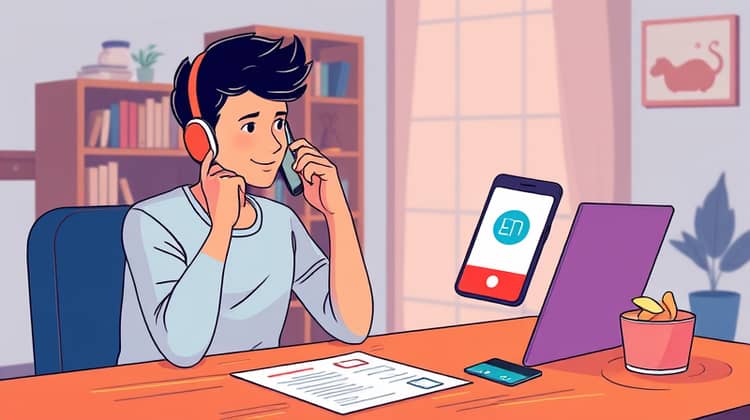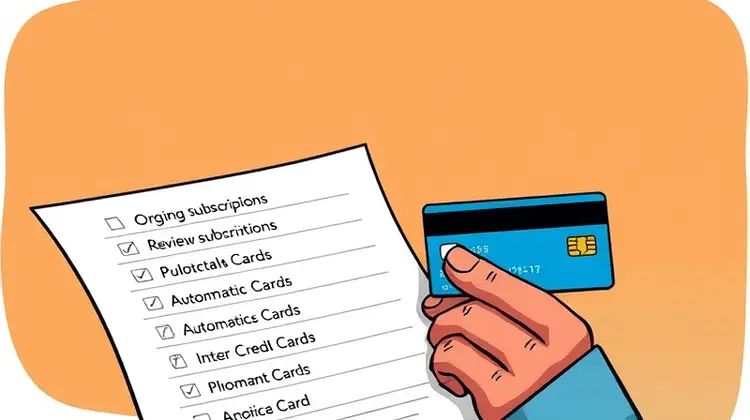Losing a credit card can be a stressful experience, especially when it seems like it has vanished into thin air. Whether it was stolen or misplaced, the important thing is to stay composed and take action promptly. Quick and effective response is crucial in safeguarding yourself from fraud and potential financial losses. Here’s what you need to do immediately if you suspect your credit card is lost or stolen.
First, it's essential to remain calm and assess the situation. Panic can lead to hastiness, causing you to overlook critical steps that could protect your financial wellbeing. By staying level-headed, you can think clearly and make more accurate decisions regarding what to do next. Remember, you are not the first person to face such an ordeal, and you can navigate your way through it effectively.
You might be tempted to create a list of panic-driven actions, but instead, approach the problem methodically. Remind yourself that there are established procedures designed to assist you in such situations. Following these structured steps will not only help you mitigate losses but also restore peace of mind faster.
In this article, we will walk through the essential steps to take immediately after realizing your credit card is missing. From contacting your credit card issuer to monitoring your credit report, we’ll cover everything you need to do to secure your finances. Let's get started!
1. Stay Calm

It's normal to feel anxious or panicked upon discovering that your credit card is lost or stolen. However, the first step you must take is to collect your thoughts and maintain your composure. Remember, your emotional response can hinder your ability to act effectively, so take a deep breath and focus on the next steps you need to take.
Try to remind yourself that while this situation is unpleasant, it is manageable. Having a good plan of action can significantly reduce anxiety levels. Understanding the steps to take can not only offer clarity but also create a pathway toward resolving the issue more efficiently.
Moreover, consider that most credit cards come with fraud protection. This means that in most cases, you will not be held responsible for unauthorized charges if you report the loss or theft in a timely manner. Thus, knowing this information may help you stay calmer, as you recognize that financial damage can be minimized.
Once you've taken a moment to calm down, you can pinpoint your next move with clear thinking. Focus on taking the necessary actions instead of worrying about what you might have lost.
2. Contact Your Credit Card Issuer

Once you have calmed your nerves, it’s essential to contact your credit card issuer immediately. They are best equipped to help you through this situation and can take prompt actions to protect your account. The earlier you inform them about the lost or stolen card, the better they can prevent fraudulent activities.
Most banks have dedicated hotlines for reporting lost or stolen cards. It’s a good practice to have this number saved in your contacts or to store it securely, as you may require it in an emergency.
- Call the customer service number found on your bank statements or their website.
- Notify them of your lost or stolen credit card to block any unauthorized transactions.
- Request that a new card be issued.
- Inquire about any fraudulent charges and how to dispute them.
After you have reported the loss, your credit card company will take steps to secure your account, which may include blocking your old card and issuing a new one. They may also investigate recent transactions to ensure no unauthorized purchases have taken place. Make sure to ask how long it will take for the new card to arrive and any other follow-up steps you should consider.
Being proactive by contacting your credit card issuer promptly can save you a lot of trouble down the line. A swift response not only minimizes risks but also gives you peace of mind.
3. Review Recent Transactions

After contacting your credit card issuer, it’s crucial to take some time to review your recent transactions thoroughly. Look for any unfamiliar or suspicious activity that may indicate fraud or unauthorized use of your card. Remember to check not only the last few transactions but also more past ones just in case.
A thorough review of recent purchases will help you understand if any fraudulent transactions were made while your card was lost or stolen. It’s essential to catch these discrepancies early so you can report them to your credit card company immediately.
Make sure to document any unauthorized transactions, as this information will be vital when you communicate with your credit card issuer. They may need specific details about the charges, including dates, amounts, and merchants' names. This documentation will assist them in their investigation.
If you notice any fraudulent charges, make sure to report them to your issuer right away. They will guide you through the process of disputing those charges and may offer additional protections or privileges under their terms.
4. Monitor Your Credit Report

Once you've dealt with your lost or stolen card, it’s time to monitor your credit report. Your credit report contains a wealth of information about your financial history, and you can obtain it for free once a year from each of the major credit bureaus. Keep an eye on your report to ensure there aren't any unfamiliar accounts opened in your name.
- Check your credit report for any unauthorized accounts or inquiries.
- Make note of any new credit inquiries, particularly those you did not authorize.
- Keep track of any changes to your credit score.
Keeping track of your credit report regularly is not just a precaution after losing a credit card; it's a good financial habit overall. By monitoring your credit, you can spot potential identity theft early on, allowing you to take the necessary steps to prevent further issues.
Consider enrolling in a credit monitoring service that alerts you to significant changes in your credit report.
5. Update Your Account Information

After replacing your lost or stolen credit card, it’s important to update your account information linked to that card. This includes any services where automatic payments were set up. Failing to do so can lead to missed payments and potential late fees, as well as disruption in service for those subscriptions.
Be thorough about reviewing all of the places where your credit card details were stored. This may include online shopping sites, utility companies, or even streaming services.
- Update your payment information on all online retailers you frequently use.
- Notify service providers of your new card details to ensure uninterrupted service.
- Check for any reoccurring bills that might need adjustment.
By promptly updating your account information, you can ensure that your finances remain organized and that no important payments are missed. This simple yet crucial step can save you the headache of dealing with late fees or service disruptions.
6. Set New Passwords and PINs

If your credit card was lost or stolen, changing your passwords and PINs is advisable. This adds an extra layer of security to your accounts and can help minimize the risk of someone gaining unauthorized access to your financial information. Treat your financial security like a priority, as having a strategy in place is always best, especially if your card has fallen into the wrong hands.
When creating new passwords, ensure they are strong and unique. Avoid using easily guessed combinations such as birthdays or common phrases.
- Create complex passwords that include a mix of upper and lower-case letters, numbers, and special characters.
- Use different passwords for different accounts.
- Consider using a password manager to help keep track of your updated passwords.
By updating your passwords and PINs regularly, you significantly reduce the risk of identity theft and fraud. Always be vigilant about your digital security, especially after a security breach related to lost or stolen cards.
7. Use Account Alerts and Notifications

Many banks and credit card issuers offer tools that allow you to set up alerts and notifications regarding your account activity. These alerts can notify you of transactions over a certain amount, unusual purchases, or even reminders about payment due dates. Establishing these alerts provides an additional layer of security that can help you catch potential fraud early on.
Make it a habit to review these alerts regularly. While they may seem overwhelming at times, staying in tune with your account activity can prevent serious complications down the line.
Having notifications sent straight to your phone allows you to act quickly should any suspicious activity arise on your account, empowering you to take control of your finances.
8. Stop Automatic Payments

If your lost or stolen card was linked to recurring payments or subscriptions, stopping these automatic payments may be necessary to prevent unauthorized charges. While your credit card issuer will help prevent these payments from going through with a newly issued card, it’s wise to take proactive measures.
Review all ongoing subscriptions and payment commitments associated with your previous card. This will ensure that you are not charged on a card that has been compromised.
9. Follow Up in Writing

After taking initial steps, follow up with your credit card issuer in writing. Documenting your account of the lost or stolen card not only provides a paper trail but also ensures that you keep track of what’s been discussed at each stage of the process. This is especially important if you have reported fraudulent transactions.
When writing to your issuer, include details such as dates and times of your communications, any reference numbers given to you, and descriptions of unauthorized transactions.
10. Stay Vigilant

The most critical step after losing your credit card is to remain vigilant. Keep an eye on your statements and report any suspicious activity as soon as possible. Fraud can take time to manifest, and it's crucial to maintain a close watch on your financial accounts even after your card has been replaced.
Regularly monitor your accounts and credit reports, as identity theft can occur in many ways. The sooner you catch any discrepancies, the easier it is to resolve them.
Conclusion

In conclusion, losing a credit card can be distressing, but taking the appropriate steps can limit potential damage and restore your peace of mind. Stay calm, act quickly, and remain vigilant after recovering your card. With diligence and caution, you can navigate this situation effectively and avoid future issues related to your financial security. Remember, protecting your identity and finances is a continuous process that requires your active participation.














